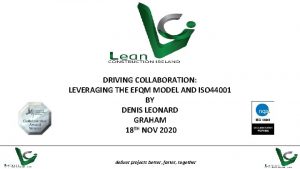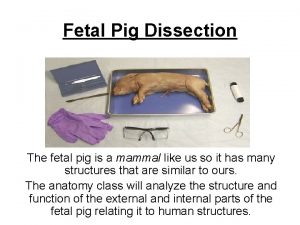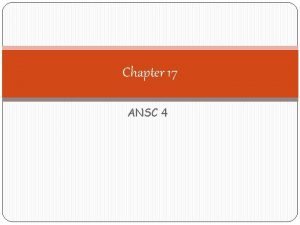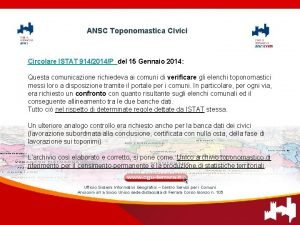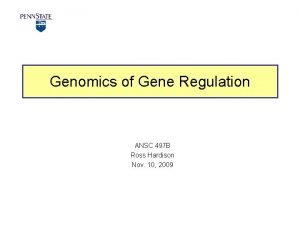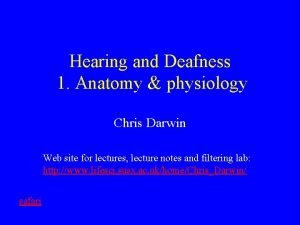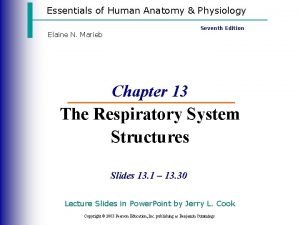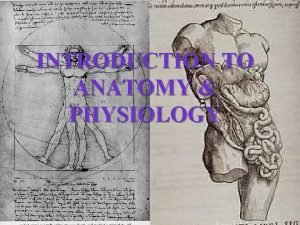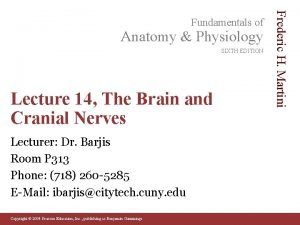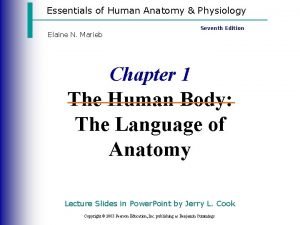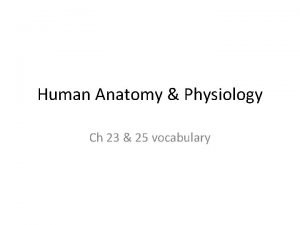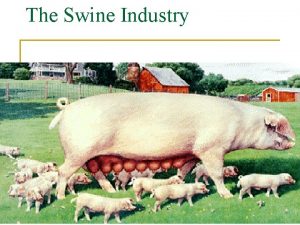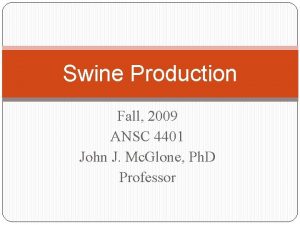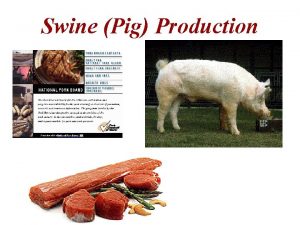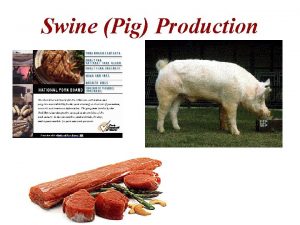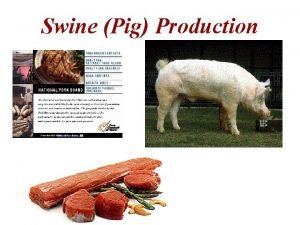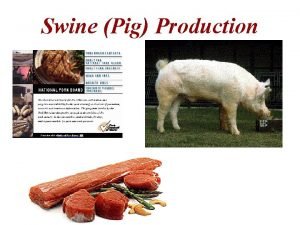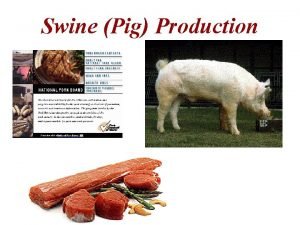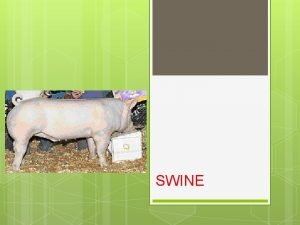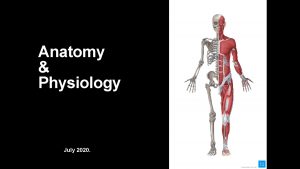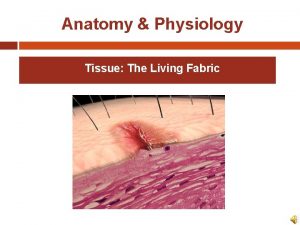Anatomy Physiology of the Pig ANSC 4401 Swine























- Slides: 23

Anatomy & Physiology of the Pig ANSC 4401 Swine Production

Why understand pig A&P? It will open new areas of application of pig biology to benefit humans ¢ It helps you have a conversation with other pig people, veterinarians and scientists ¢ It will help you manage pigs in meaningful ways on farms ¢ Recognize disease states more easily l Obtain blood or other tissue samples l

Anatomy & Physiology Outline Anatomical terms ¢ Major bones ¢ Uses for pigs other than for eating ¢ Some terminology ¢ Blood collection ¢ Necropsy ¢

Anatomical terms

Major bones of the pig

Uses of pigs other than for eating Organ donors ¢ As a source of biological materials, ex. Insulin or heparin ¢ As a model for biomedical research ¢ As an organ donor to humans ¢ For entertainment ¢ As pets ¢ As truffle-finders (they are smell experts) ¢

Xenotransplantation & Cloning New pig cloning research promising yet risky, studies indicate August 17, 2000 Web posted at: 12: 57 PM EDT (1657 GMT) WASHINGTON (CNN) -- Two groups of researchers publishing work in rival scientific journals report similar successes in cloning pigs -- a difficult process that may lead to ways to grow organs in the animals destined for human transplantation. "The goal here is to reduce the shortage of organs for transplantation and prevent any more needless deaths that arise because people simply don't receive the organ they need, " said Dr. Anthony Perry of New York's Rockefeller University.

Some Terms ¢ ¢ Serum (fluid minus all cells and clotting factors) Plasma (fluid including soluble clotting factors) Red blood cells (obtained only from plasma) White blood cells (obtained only from plasma)

Composition of Newborn Pigs

Blood Collection From Pigs ¢ Ear veins ¢ Jugular vein ¢ Facial vein ¢ Tail vein ¢ Orbital Sinus

Points to sample from or inject into the venous system of pigs

Common Bleeding Ports Orbital venous sinus Facial Vein Auricular (ear) vein External Jugular Vein

Bleeding Trough for Young Pigs

Bleeding tools: Vacutainer

Bleeding sows

Blood Collection Tubes

Maximum safe blood draw Total blood volume, m. L Maximum draw, m. L Newborn, 3 lb 110 10 Nursery pig, 35 lb 1, 280 120 Sow, 440 lb 16, 000 1, 600 Age & weight

Selected normal blood values Measure Blood volume WBC count Neutrophils Lymphocytes Gamma globulin Value 8% 10 -12 thousand/μL 45 % 50 % 25 -30 mg/m. L

Necropsy – Why? To improve the herd health ¢ To contribute to the herd health program ¢ To identify causes of illness or death so that ¢ Effective treatments can be applied l Preventative measures can be implemented l

Necropsy – What to look for ¢ ¢ ¢ ¢ Skin condition Swollen joints Wounds or abscesses Intestinal condition (fluid-filled, bloody, gas, etc) Lung condition (hemorrhage, non-functional tissues, edema, etc. ) Liver condition (look for milk spots; indication of a parasitic infection) Condition of other organs (kidneys, spleen, heart) Snout condition (condition of the turbinates)

Necropsy – “normal”

Necropsy -- Tools Scalpel ¢ Probes (spatula or equivalent) ¢ Saw (hack saw or equivalent) ¢ Water ¢ Mechanism to dispose of parts (plastic bags) ¢

The End
 Anatomical planes
Anatomical planes Efqm
Efqm Fetal pig
Fetal pig Ansc 497
Ansc 497 Aggiornamento ansc
Aggiornamento ansc Ansc 497
Ansc 497 Ansc 497
Ansc 497 Anatomy and physiology
Anatomy and physiology Anatomy and physiology
Anatomy and physiology Appendectomy anatomy and physiology
Appendectomy anatomy and physiology Anatomy and physiology of the foot
Anatomy and physiology of the foot Anatomy and physiology chapter 8 skeletal system
Anatomy and physiology chapter 8 skeletal system Anatomy and physiology
Anatomy and physiology Anatomy and physiology
Anatomy and physiology Holes essential of human anatomy and physiology
Holes essential of human anatomy and physiology Oblongata
Oblongata Unit 26 animal anatomy physiology and nutrition
Unit 26 animal anatomy physiology and nutrition Liver anatomy
Liver anatomy Aohs foundations of anatomy and physiology 1
Aohs foundations of anatomy and physiology 1 Anatomy and physiology
Anatomy and physiology Chapter 13 anatomy and physiology of pregnancy
Chapter 13 anatomy and physiology of pregnancy Endomysium
Endomysium Anatomy and physiology vocabulary
Anatomy and physiology vocabulary Anatomy of brain
Anatomy of brain

